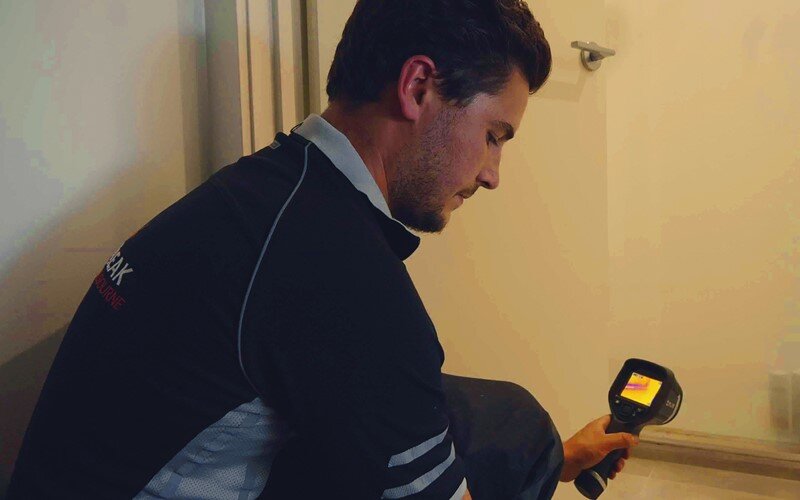How to Check If Your House Has a Concealed Leakage
How to Check If Your House Has a Concealed Leakage
Blog Article
Just about every person is bound to have his or her own way of thinking about Finding hidden leaks.

Early detection of dripping water lines can minimize a potential disaster. Apart from conserving you cash, it will lessen the irritation as well as stress. The minute you discover a leakage, calling your plumber for repair work is the most effective service. Some small water leakages might not be visible. Below are some hacks that assist if you can not find it with your naked eyes.
1. Check Out the Water Meter
Every home has a water meter. Examining it is a guaranteed manner in which assists you uncover leaks. For beginners, turn off all the water resources. Ensure no person will flush, utilize the tap, shower, run the cleaning device or dishwashing machine. From there, go to the meter as well as watch if it will certainly change. Because no one is utilizing it, there need to be no motions. That indicates a fast-moving leakage if it relocates. Also, if you spot no changes, wait a hr or two and also check back once again. This indicates you may have a sluggish leakage that can even be underground.
2. Inspect Water Intake
If you detect sudden modifications, in spite of your intake being the same, it suggests that you have leakages in your plumbing system. An unexpected spike in your costs indicates a fast-moving leak.
Meanwhile, a consistent increase monthly, even with the same behaviors, shows you have a slow-moving leakage that's likewise slowly rising. Call a plumber to extensively examine your building, specifically if you feel a warm location on your flooring with piping underneath.
3. Do a Food Coloring Test
When it involves water intake, 30% comes from commodes. Examination to see if they are running appropriately. Decline flecks of food shade in the tank and also wait 10 mins. If the shade somehow infiltrates your bowl during that time without flushing, there's a leak in between the storage tank and also dish.
4. Asses Exterior Lines
Do not forget to check your outdoor water lines as well. Needs to water seep out of the connection, you have a loosened rubber gasket. One small leak can squander bunches of water and surge your water expense.
5. Assess the situation and also examine
Home owners must make it a practice to check under the sink counters as well as even inside closets for any bad odor or mold and mildew growth. These 2 red flags show a leak so prompt focus is required. Doing routine assessments, also bi-annually, can conserve you from a significant problem.
Inspect for stainings as well as weakening as most pipes as well as devices have a life expectations. If you believe dripping water lines in your plumbing system, do not wait for it to escalate.
Early detection of leaking water lines can alleviate a prospective catastrophe. Some small water leaks may not be noticeable. Examining it is a guaranteed means that helps you discover leaks. One small leak can lose loads of water and increase your water costs.
If you presume leaking water lines in your plumbing system, don't wait for it to rise.
WARNING SIGNS OF WATER LEAKAGE BEHIND THE WALL
PERSISTENT MUSTY ODORS
As water slowly drips from a leaky pipe inside the wall, flooring and sheetrock stay damp and develop an odor similar to wet cardboard. It generates a musty smell that can help you find hidden leaks.
MOLD IN UNUSUAL AREAS
Mold usually grows in wet areas like kitchens, baths and laundry rooms. If you spot the stuff on walls or baseboards in other rooms of the house, it’s a good indicator of undetected water leaks.
STAINS THAT GROW
When mold thrives around a leaky pipe, it sometimes takes hold on the inside surface of the affected wall. A growing stain on otherwise clean sheetrock is often your sign of a hidden plumbing problem.
PEELING OR BUBBLING WALLPAPER / PAINT
This clue is easy to miss in rooms that don’t get much use. When you see wallpaper separating along seams or paint bubbling or flaking off the wall, blame sheetrock that stays wet because of an undetected leak.
BUCKLED CEILINGS AND STAINED FLOORS
If ceilings or floors in bathrooms, kitchens or laundry areas develop structural problems, don’t rule out constant damp inside the walls. Wet sheetrock can affect adjacent framing, flooring and ceilings.
https://www.servicemasterbyzaba.com/blog/how-to-detect-water-leakage-in-walls/
.jpg)
I discovered that page about Locating water leaks when doing a search on the search engines. If you please set aside a second to share this write-up if you liked it. Thank-you for taking the time to read it.
Report this page